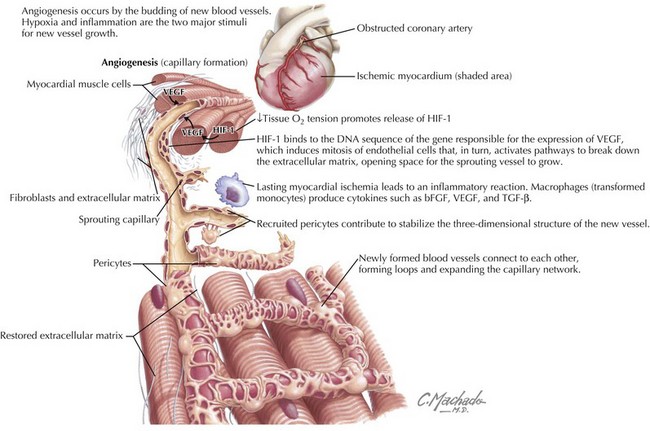44 Angiogenesis and Atherosclerosis
Mechanisms of Angiogenesis
Angiogenesis occurs by the budding of new blood vessels from existing vessels (Fig. 44-1). Inflammation and hypoxia are the two major stimuli for new vessel growth. Hypoxia regulates angiogenesis predominantly by activating a transcription factor, hypoxia-inducible factor-1, which in turn activates the angiogenesis gene expression cascade. Inflammation stimulates angiogenesis mainly by the secretion of inflammatory cytokines derived primarily from macrophages. In either event, the result is production of vascular endothelial growth factor (VEGF) and other potent angiogenic peptides. VEGF interacts with specific receptors on endothelial cells that, in turn, activate pathways to break down the extracellular matrix and stimulate proliferation and migration toward an angiogenic stimulus and recruitment of pericytes and smooth muscle cells to establish the three-dimensional structure of a blood vessel. After making appropriate connections with the vascular system, the newly formed vessel is capable of maintaining blood flow and providing oxygen to the tissue in need.




